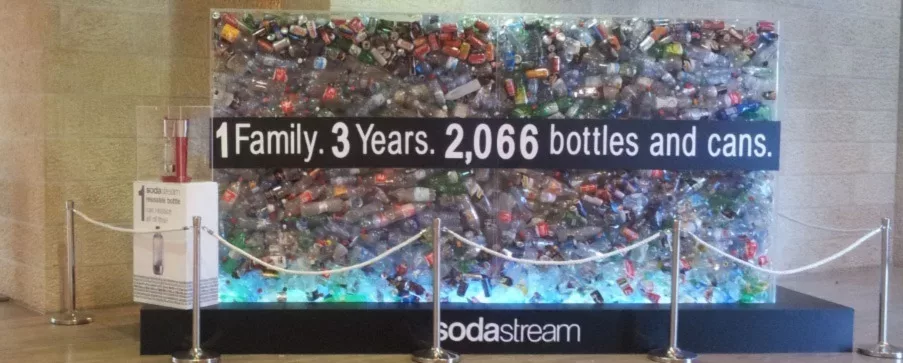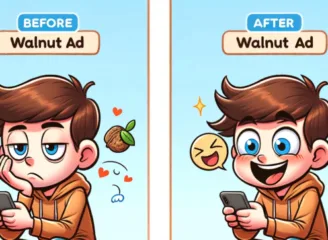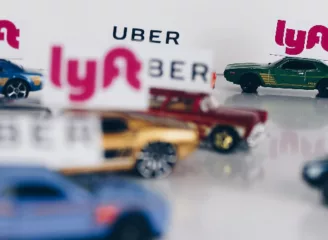While listening to Stela Krief, the former CEO of SodaStream’s Israel, on the Billboard podcast, something in particular she said caught my attention,
“At SodaStream, we walk the talk. There is no social agenda that needs to be invented. At other companies where I worked when forced to choose a social agenda it was always pushed aside, and in SodaStream it’s simple, the social agenda is inherently part of the product so we don’t need to work hard on saying that.
As a marketer, this statement really appeals to me. It is wonderful to market a company that has strong values and expresses them genuinely. Books like Start with why (by Simon Sinek) and This is marketing (Seth Godin) talk about this specific advantage that great brands have compared to others in their field.
I’m not sure how many of you are familiar with the SodaStream brand or can recognize it at a glance, but the way this brand has developed in the past decade is no less than remarkable. The company was founded in 1903 and was close to bankruptcy in the early 2000s. A change in mindset, brave decisions, and knowing how to recognize and leverage opportunities led to the company being acquired by PepsiCo in 2015 for $3.2 billion. It is now one of PepsiCo’s Top 23 brands that generate $1 billion or more in annual sales.
In a great lecture, Daniel Birnbaum, the former SodaStream CEO, describes the milestones they went through, from his first steps in the company to being acquired by PepsiCo, and how their unique growth strategy was to develop company guidelines and stick to them.
Define your playground
When Daniel joined in 2010, he wanted to clarify the product market fit with the veteran team members. So, he asked some questions:
“What is the playground that we’re playing on?”, “Is the product a water product, a bubble one? Why is it distributed in electronics stores but it doesn’t require electricity to use it?”
“It’s a domestic gas system,” was the answer.
“But no one is thinking they need to buy a domestic gas system for their home,” he thought to himself.
At that moment, he realized that they had to redefine Soda Stream’s marketplace, they are not competing with “Nespresso” and “KitchenAid” on kitchen materials anymore; they are shifting their focus to compete in the soda industry, playing with companies like “Coca-Cola” and “PepsiCo.” From a $100M yearly market to $260B, jumping from a pond to the ocean. They truly believed they could be an alternative to the legacy beverage companies, that they deliver something unique. Plus, they didn’t have anything to lose, company sales were in decline regardless.
Years later, Mati Yahave, SodaStream CMO, mentioned (At Gefenpodcast 00:02:45) that their growth came with this change in their mindset.
Keep your eyes open to opportunities
It began in Belgium. SodaStream employees presented an environmental issue exhibit in a high school. They presented a cage of plastic bottles, it wasn’t a recycling bin, these plastic bottles were taken from the garbage and represented the number of bottles an average family in Belgium throws in 3 years (around 2 thousand bottles).
This concept gave Daniel an idea, he asked his managers all over the globe to duplicate this kind of exhibit and place it in airports, train stations, and other public places. It was a low-budget guerilla marketing tactic and in just 2 weeks they had exhibits all over the world.
One exhibit made a difference, in Johannesburg, South Africa. One of Coca-Cola’s C-level managers passed by it and didn’t like what he saw. Although, in legal terms, SodaStream (and anyone) can buy any company’s bottles and use them as they wish, Coca-Cola decided to send a lawsuit. After overcoming the shock, SodaStream responded that the lawsuit was without grounds, but still, Coca-Cola didn’t give up and sent another letter.
SodaStream noticed an opportunity here and made PR gold out of it. They gave Forbes the thread with 30 minutes’ exclusivity. Forbes grabbed it with both hands and the “New Cola War? Sodastream Refuses To Comply With Coca-Cola’s Cease-And-Desist Letter” article covered their homepage. This act immediately increased public awareness of SodaStream. Suddenly, a small Israeli brand close to bankruptcy was mentioned as a legitimate competitor to one of the most familiar brands in the world (Amazing!). And that’s how the word started to spread, the media covered it all over the world. What started as a $10K marketing budget delivered 7.5B impressions in news coverage.
Create your own textbook
At that time PepsiCo and Coca-Cola’s marketing budgets were estimated to be around $10B a year. In contrast, SodaStream’s marketing budget was $50M (0.3%). How could they gain a meaningful share of voice with this kind of budget?
The fact that they had to build a new category in a highly competitive market with strong legacy companies led them to the realization they should establish their own unique textbook. Try things, make mistakes, try other stuff and make mistakes again until you find the right direction.
The company directors asked themselves one big question: What do we want to be? They hadn’t defined their “why” up until then.
So, like every marketing department, they conducted a survey. They surveyed their customers and asked one main question: “Give one single reason why you use SodaStream.”
So, like every marketing department, they conducted a survey. They surveyed their customers and asked one main question: “Give one single reason why you use SodaStream.”
The results were straightforward:
40% – It saves us from carrying bottles.
27% – It saves us money.
25% – More healthy, you drink more water when you have it in your house.
8% – It’s better for the environment.
As a first step, they leveraged this data and created an April Fools video, HeavyBubbles, which went viral without media spending.
Intuitively, they should have run with this concept as a strategy, but SodaStream didn’t want to help people with their back issues, and also, saving money didn’t feel like their destiny. So, they decide to run with the least apparent reason but the most concerning one and focus on the environmental issue, owning the environmental benefit of reducing the usage of plastic bottles (to be plastic fighters). Employees can be proud of helping save the planet. It took courage, knowing it would take 2-3 years for people worldwide to start to fight against the use of plastic, and still, they decided to go for it.
Jeremy Bowman explains well in a 2018 article why Wall Street Just Doesn’t Get SodaStream and why the company wasn’t going flat even though the predictions forecasted otherwise. Apparently, he was right. It took only 6 months after this strategic decision for PepsiCo to reach out with a business offer.
My takeaway from their branformace story
Daniel believes that their environmental direction was a big part of PepsiCo’s decision and that SodaStream is raising the environmental flag. What also supports his belief is that 9 out of the top 20 countries interested in SodaStream (according to Google trends) are also considered the top 10 environmentally friendly countries worldwide.
Brandformance can come in many shapes and sizes. Beyond the fact that SodaStream positions itself with honest values, my main takeaway from their story is the power of a clear northern star guiding every element of a marketing effort. If a specific direction doesn’t lead to this star, it isn’t taken. This kind of clarity is a useful tool for every company and marketer.
 Linkedin
Linkedin
 Facebook
Facebook



